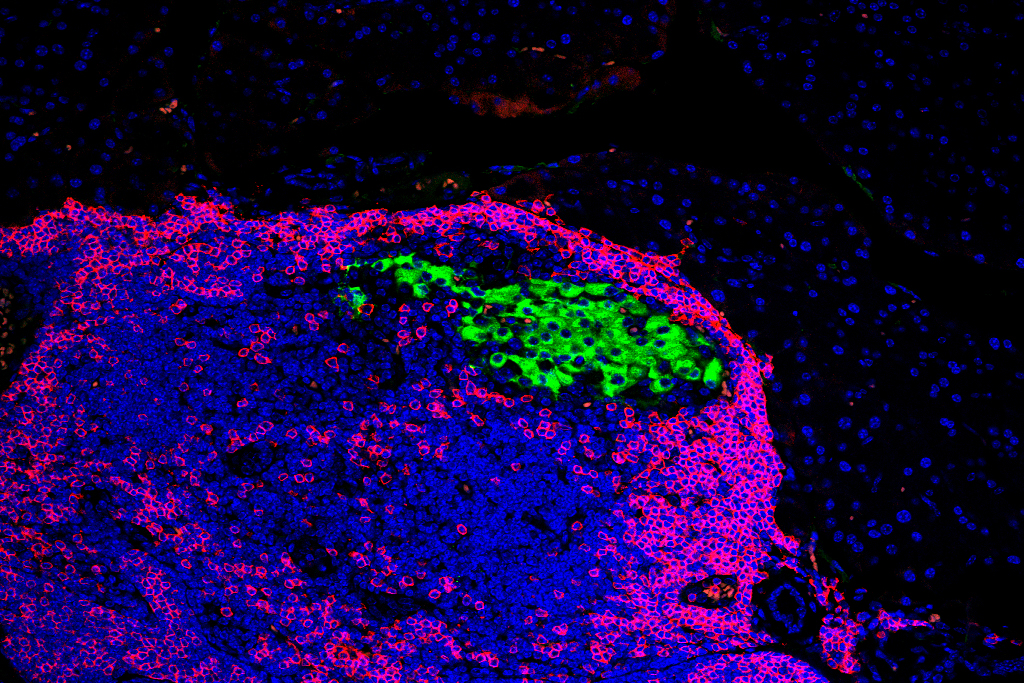CSI: Discovery
On a chilly February evening in Mazomanie, Wisconsin, Dane County Sheriff Deputies arrived at the scene of a homicide: an old two-story house in a neighborhood blanketed with snow. Deputy Sheriff Scott Lehman understood immediately the monumental task he and his Crime Scene Unit faced in collecting and cataloguing the evidence in the house.
At a crime scene, every detail has the potential to be significant. Often, it’s not until the later stages of an investigation or even a trial that it becomes apparent which details matter. And sometimes, there are so many details in a complicated crime scene that it becomes impossible to record and document each one. This particular house had a multitude of doors and rooms, each filled with furniture and other objects, all potentially crucial in the investigation and trial to come.

Ross Tredinnick
Lehman called Lieutenant David Karls, who for the last four years had been cultivating contacts in the world of 3D environment scanning systems, technology that was only beginning to be used by law enforcement agencies. After a string of phone calls, Karls connected with Dr. Patricia Flatley Brennan of the Living Environments Laboratory at the Wisconsin Institute for Discovery. Dr. Brennan and her research team use 3D environment scanning technology to gain insight on how personal health information is managed in the home environment. She enlisted the technical expertise of Ross Tredinnick to assist the Sheriff’s Office with their investigation and the next morning, Tredinnick carefully prepared the lab’s LiDAR scanner and rode with Lieutenant Karls west on Highway 14 to Mazomanie.
A LiDAR scanner uses a combination of lasers and a camera to create a 3D model of an entire environment. The lunchbox-sized device sits on a tripod and slowly rotates around 360 degrees. As it moves, an angled mirror rotates and reflects a laser into the room. The laser hits objects in the surrounding environment and bounces back. Through calculations based on the time it takes for the laser to return to the scanner, the system calculates millions of distance measurements. These measurements are tied to a panoramic photograph of the space to create a data set of full color 3D points, often referred to as a ‘point cloud’. By moving the scanner to several locations and combining the resulting point clouds, a full 3D model of an entire environment can be rendered.
“To only capture a tenth of the information we gathered would have taken an entire 40-hour week with two teams of two doing nothing but measuring and diagramming.” — David Karls
That February day in 2014, Tredinnick completed 37 scans over the course of about 10 hours at the house in Mazomanie. Later, he stitched the scans together into a complete 3D rendering of the crime scene. Tredinnick and Lieutenant Karls previewed the resulting point cloud in the CAVE, a fully immersive 6-sided virtual reality environment in the lower level at WID, and on standard viewing monitors. Collecting the equivalent data with traditional methods would have been far more time- and labor-intensive. According to Karls, “to only capture a tenth of the information we gathered would have taken an entire 40-hour week with two teams of two doing nothing but measuring and diagramming.” Even after all of that paper-and-pencil work, the drawings and measurements would still need to be entered into a program to render a simple 2-dimensional diagram of the scene.
But 3D scanning isn’t just a time saver; it can impact an investigation and trial in other profound ways. For example, scanning early in an investigation can prevent crime scene contamination. “If we can capture it early on, like day one, we can bring it in and present it at a briefing so that all of the people working on the case can get a feel for it… We don’t want everyone traipsing through the scene,” says Karls. “We can put it up on the screen and say, ‘this is where it took place, this is where it started, this is where it ended, these are the pieces of evidence that we found on our initial walkthrough,’ and then again at trial, present it for a jury.” The technology, despite its novelty, is being increasingly used and accepted in court, where Karls says it can be a much more effective representation of a scene than diagrams and photographs alone.
Additionally, the need for costly site visits during a trial, during which a jury, judge, defense, prosecution, and court staff are transported to the crime scene, can be greatly reduced with the use of 3D scanning. “It minimizes the risk of a mistrial; if something goes wrong during all of that transport of jurors and the defendant, that can be very expensive,” adds Deputy Sheriff Greg Leatherberry. And if a jury wants to revisit the scene, they can do so at any time with the virtual recreation of the scene.
The 2014 Mazomanie case did not end up going to trial; the defendant pled guilty and received a 20-year prison sentence. Though the scans completed by Tredinnick were never used in court, the case marked the beginning of a promising collaboration between the Living Environments Lab and law enforcement. The lab and the Dane County Sheriff’s Office are currently working on a grant proposal to expand the use of 3D scanning by law enforcement agencies, including a project aimed at building a library of bullet impact and trajectory patterns for various firearms. Ideas for future projects abound as well; for example, the team has discussed pre-scanning high-risk public areas like schools and government buildings to create detailed schematics for use in emergency situations.
In the meantime, the Dane County Sheriff’s office has acquired their own 3D scanner; the department is the first law enforcement agency in the country to implement the handheld Panoscan PointGun scanner, which operates somewhat differently from the LiDAR scanner but with similar results. Ideally, the LiDAR scanner could be used in conjunction with the PointGun scanner to create an even more comprehensive image of the scene.
For now, Lieutenant Karls and the Dane County Sheriff’s office are happy to be in partnership with Tredinnick and his team at the Living Environments Laboratory at WID on the cutting edge of crime scene technology. For the lab, the opportunity to put their research to work in an emerging field is exciting and intriguing. “It was interesting for us to be able to apply our techniques and our work from other areas to something so tangible,” says Erica Gill, the associate director of LEL. “It’s something we’re really proud of.”
— Nolan Lendved





